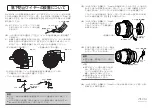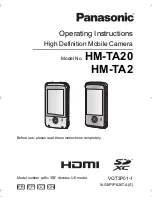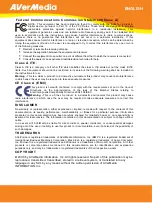
Chapter 5
Operation
79
5.4.3
Readout Rate
Refer to
for the list of Readout Rate supported by ProEM
The Low Noise readout port is ideal when high speed acquisition is not required and/or
long integration times can be used to build up the signal. Lower readout speeds (e.g.,
100 kHz) and lack of excess noise in this mode offers better signal to noise ratio when
high frame rate is not required. On the other hand, increased frame readout rate can be
achieved by one or more of the following: higher readout speed, subregion selection,
and/or binning.
For additional information about frame rate, refer to the product data sheet.
5.4.4
Region of Interest
A Region of Interest (ROI) may be the entire CCD array or it may be a rectangular
subregion of the array.
•
In WinX/32, the definition of such a region is done either from the Easy Bin
dialog accessed from the Acquisition menu or from the ROI Setup tab,
accessible after selecting Experiment Setup from the Acquisition menu. Easy Bin
is a simple way of a defining a single full chip width ROI. ROI Setup allows you to
create ROIs with greater flexibility in ROI location and width.
•
In LightField, ROIs are set up via the Region of Interest expander.
Each ROI is defined in the X and Y direction by a start pixel, an end pixel, and a
group/height (binning) factor. After one or more regions have been defined and stored,
data acquisition will use these regions to determine which information will be read out
and displayed and which information will be discarded.
•
In WinX/32, when ROIs are used to acquire data, the ROI parameter information
(for the first 10 ROIs) is stored in the data file when that data are saved to disk.
You can review this information for the active data display by using the File
Information functionality (accessible from the File menu or from the Display
Context menu).
Table 5-3: Readout Rates
CCD Type
Multiplication Gain
{Electron Multiplied}
Low Noise
Frame Transfer
5 MHz
10 MHz
100 kHz
1 MHz
5 MHz
Full Frame
1 MHz
4 MHz
6.67 MHz
100 kHz
1 MHz
5 MHz
Summary of Contents for ProEM Series
Page 1: ...www princetoninstruments com ProEM System Manual 4411 0126 Issue 3 September 26 2019 ...
Page 10: ...10 ProEM System Manual Issue 3 This page is intentionally blank ...
Page 16: ...16 ProEM System Manual Issue 3 This page is intentionally blank ...
Page 30: ...30 ProEM System Manual Issue 3 This page is intentionally blank ...
Page 50: ...50 ProEM System Manual Issue 3 This page is intentionally blank ...
Page 88: ...88 ProEM System Manual Issue 3 This page is intentionally blank ...
Page 114: ...114 ProEM System Manual Issue 3 This page is intentionally blank ...
Page 122: ...122 ProEM System Manual Issue 3 Figure 7 8 LightField Settings 4411 0126_0078 ...
Page 136: ...136 ProEM System Manual Issue 3 This page is intentionally blank ...
Page 146: ...146 ProEM System Manual Issue 3 This page is intentionally blank ...
Page 152: ...152 ProEM System Manual Issue 3 This page is intentionally blank ...
Page 161: ...This page is intentionally blank ...
















































